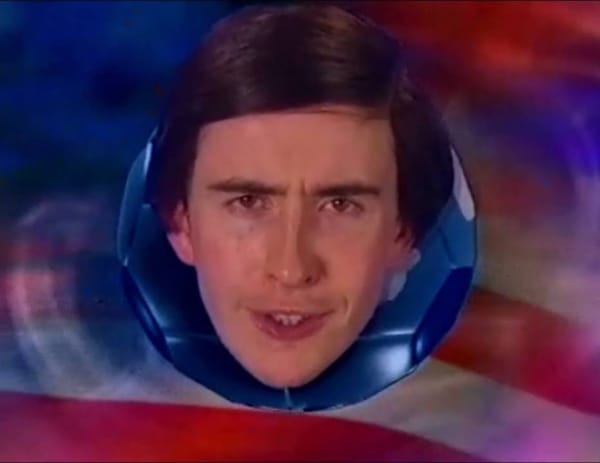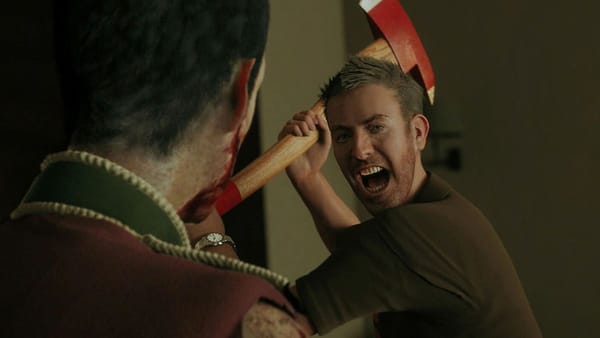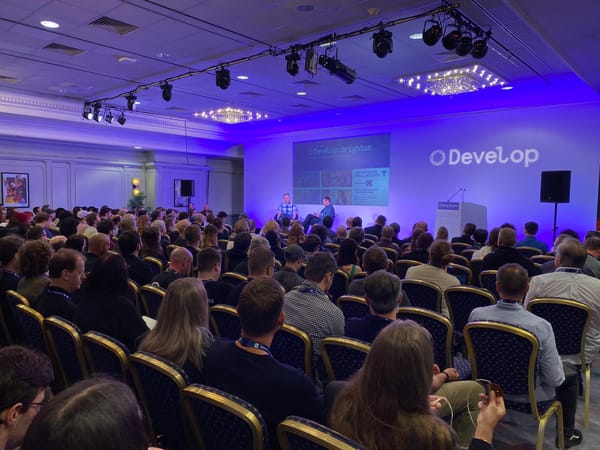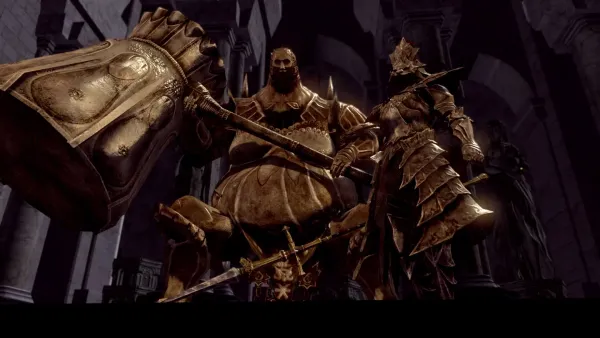#148: Build back bigger
Embracer Group may be too big to fail, but is it really that well set up for success?
There’s a line in a song called Constructive Summer, by one of my favourite bands, The Hold Steady:
“Let this be my annual reminder that we can all be something bigger.”
I’ve listened to that song hundreds of times over the years, and typically sing along to every word. (The Hold Steady do that to you.) But I always get that line wrong. I always end it with “something better” instead of “something bigger”. Better is better than bigger, no? And making something bigger does not automatically make it better. So if we have a north star here it should be better, not bigger. Right? Yes? Good.
I wonder whether Lars Wingefors agrees with that. The CEO of Embracer Group has been on an enormous shopping spree in the last couple of years, acquiring developers, publishers and IP catalogues left and right. Throughout, I have wondered just what Wingefors’ goal is in all this. With each acquisition, the company gets bigger; new shares are issued, and the proceeds from their sale are used to fund the next big deal. But is that it? Is this just about a concentration of wealth and power? Or is Embracer trying to use its ever-increasing size to make games, and the game industry, better?
I have never quite been able to work that out. And Embracer’s 2,000 word strategic mission is no real help, if I’m honest. I’ve been conscious for a while that the only time we ever hear Embracer’s name is when it’s acquired some new studio, or a fresh batch of renowned IP. We do not really associate it with actual, well, you know. Videogames.
Until, that is, Saints Row came along. Developed by Volition and published by Deep Silver — whose parent company Plaion (née Koch Media) was acquired by Embracer (when it was still THQ Nordic, god this is confusing) back in 2018 — Saints Row represented the first high-profile test of Embracer as a videogame business, rather than an ever-growing holding company. It has not, I think it fair to say, passed that test with flying colours. The PS5 version has a Metacritic average of 62, and a user score of 3.0 (though you can, and always should, ignore the latter).
This week Wingefors has admitted as much, telling attendees of Embracer’s AGM he was disappointed with Saints Row’s launch. “Personally, I had hoped for a greater reception to the game,” he sobbed. “It’s been very polarising. There are a lot of things that could be said in detail around it, but I’m [on] one hand happy to see lots of gamers and fans happy. At the same time I’m a bit sad to also see fans not happy, so it’s difficult.
“On the financial side, I know, or I’m confident, we will make money on the investment. Would it have as great a return on investment as we have seen in many other games? Not very likely, but we will make money, and that’s a very good starting point at least.”
I’ve played 15 hours or so of Saints Row. It is, quite clearly and manifestly, Not Good. But nor do I think it entirely deserving of the widespread dunking it has received from press and players. Sure, the driving model’s all over the shop, gunplay is woolly and awkward, and the whole thing’s a bit of a mess tonally. There are wacky bugs and ridiculous physics glitches, and my character for some reason takes a little damage every time they get out of a car. But gang, it’s Saints Row! We weren’t exactly expecting a game for the ages here, were we? I bought it because I fancied playing a knockabout, modern-day, open-world crime caper and I certainly have one of those, for all its many flaws.
My consultancy work makes me a little more tolerant of Saints Row’s shortcomings, sure. I have been conditioned to look past things that would be considered unacceptable in a shipped product, because I play a lot of games that are still many months away from release. So as I round a corner in Saints Row and find a multi-block traffic gridlock, caused by two cars turning into a gentle collision out of which they have not been taught to reverse, I do not throw my arms in the air and damn the developers to hell. I allow myself a wry smile, knowing how hard open-world AI is to get right. I’d make a note if I were consulting on it but hey, it’s pretty obvious, I’m sure the devs are aware.
But that tells its own story, does it not? There is so much in here that I associate with games that are six or nine months out — bugs and glitches and lorem ipsum text strings, a general lack of polish across the board — that it stands to reason, I reckon, that Saints Row needed another six or nine months of development. Why was a company of Embracer’s evident size, wealth and resources not able to give the game this extra time? What is the point of getting bigger, in other words, if you are not also going to try and do better?
It is incredibly tempting to take a cynical view on all this. In a Financial Times article earlier this year, Wingefors explained that Embracer’s size gave its members financial security. “If you can make one game, you can have a big business risk. But if you make 200 games, like we do, the business risk is less.” At the time, I read that in the way I think I was supposed to: that Embracer knows the game biz is unpredictable, that great games often sink for one reason or another, and that the financial safety net of a massive parent company protects individual studios from going to the wall when things don’t go to plan.
But when we look at it through the lens of Saints Row, we see a different interpretation: that when the business is set up to protect against failure, you don’t need to strive too hard for success. As for the claim in Embracer’s mission statement that “games are released when the return on investment (ROI) potential is maximised,” well, let’s not think too much about that. The implications are rather bleak.
To be clear, I don’t believe that any of this is intentional. As Hit Points says slightly too often, no developer ever sets out to make a bad game. Nor do I see publishers or investors queueing up to make a quick buck by shoving out an unfinished 5/10 game in a quiet month on the release calendar. Rather I think it’s that Embracer is simply too big for it to have any meaningful impact on the way its subsidiaries are run.
It has more than 10,000 staff working at over 120 studios around the world, and has over 200 games in development. The traditional advantages of big companies — shared technology, knowledge, back-office services and so on — simply do not scale for an organisation of that size, at least not one so young and ever-changing as this. Embracer acknowledges this, in fairness: that mission statement says it only encourages, but does not force, sister companies to collaborate or integrate. Still, I think Saints Row suggests Embracer should be paying slightly closer attention to what’s going on around its ever-growing studio network.
Financial security for studios is all well and good, obviously; I am not so cold-hearted as to dismiss so noble a goal as that. But I hope over time that Embracer’s fiscal safety net allows developers to reach for the skies, rather than just letting them trundle along at ground level. If you’re already on terra firma, there’s nowhere for you to fall; and besides, as Saints Row has shown us, the traffic down there can be a real fucker.
***INTERMISSION***
A small update on paid subscriptions. I have once again changed the billing currency to His Majesty’s British Steak & Kidney Brexit Pounds. A paid sub now costs £4 a month, or £50 a year (yes it’s more expensive, and yes it’s supposed to be. I’d prefer monthly, if possible, as it’s a bit easier to keep track of).
Why am I doing this? How good of you to ask! Really it’s because I think this is better for everyone. UK readers get to swerve overseas transaction fees. I get slightly more predictable revenue, less beholden to fickle foreign-exchange rates. And for everyone else, the pound is in the absolute toilet right now — it’s at a near-40-year low against the dollar, and has slumped against the euro too, though to be fair it’s been doing that for 15 years — and given the actions of our new government, his majesty’s currency is only going to get cheaper for those overseas. Probably a good time for readers everywhere to take the plunge, I reckon. Go on!
As a reminder, a paid subscription grants you access to the occasional longform developer interview series Max HP, and earns my eternal admiration and respect. There are also additional subscriber benefits coming very soon indeed, but we’ll save that for #150 this time next week. Exciting times.
Oh, and if you’re an existing subscriber, please don’t try and cancel your USD subscription and start a GBP one. For reasons unclear, Substack’s payment processor, Stripe, doesn’t allow it. I learnt that the hard way last time. (Sigh.)
MAILBAG!
- A quiet response to Tuesday’s edition on the GTAVI leaks, but I did enjoy this from Stank Geese (??) in the cheery Hit Points Discord. “I'm so far from a developer it's almost comical, but I do work on a private server for an old online videogame in my spare time, and one of the ex-team members sold an old version of our source. It was absolutely devastating and completely binned our motivation internally, and things have never been quite the same since. We do it as hobbyists; I can't imagine how actual professionals handle something like this along with all the scrutiny on things that were never meant to be seen, and the potential impact on sales/bonus/continued employment.” Indeed. Thoughts are still with all my pals at Rockstar. Hang in there.
MORE!
- Breaking news: UK bizzies have arrested a 17-year-old in Oxfordshire in connection with the Rockstar Games hack, and potentially the Uber one as well. That was quick.
- YouTube snark maestro videogamedunkey is starting an indie publishing company, which judging by this misguided announcement video is destined for success because he, um, likes good games. I drafted something silly on this for today’s main story (and might throw it in the Discord this evening after a couple of wines) but ehh, good luck to him I guess. I’m not entirely sure how you can run both a frequently scathing game-criticism channel and a publishing business — before long, and probably quite soon, those two things will run into perceived or actual conflict — but no one’s that bothered about ethics on YouTube for some reason so right, yes, fine.
- Microsoft CEO Satya Nadella says he is “very, very confident” that Acquisition Blizzard will be waved through by regulators. Pointing to Sony having made a string of recent acquisitions while being the console market leader, he added: “If this is about competition, let us have competition.” Not sure that really stacks up, old stick, but do carry on.
- Nvidia announced its new line of PC graphics cards on Tuesday, mere moments after the day’s Hit Points had gone out to subscribers. Evading the scrutiny of the game industry’s most feared and revered newsletter, you say? I couldn’t possibly speculate. Anyway, the RTX 4080 and 4090 claim to offer tremendous performance benefits over the 3000 series, but are priced accordingly, with the mid-range card double the price of its predecessor and UK retailers asking almost £2,000 for the top-end 4090. In this economy! Fuck about. With the arse expected to fall out of the GPU market as crypto mining operations close their doors, this is quite a move — and one that, as someone in the market for an upgrade, I hope fails, and quickly.
- Cyberpunk 2077 has had a big old boost from the Netflix tie-in Edgerunners: a million people are now playing the game every day.
- I am sure you already know all about surprise GOTY contender Trombone Champ, but here it is just in case. Imagine Guitar Hero where Expert is the default difficulty, and if your finger isn’t perfectly centred on the fret it plays the wrong note. Gonna write a bit more about this at some point, but for now you should just go and play it.
There you go! Cripes, it sure feels like Friday, doesn’t it. Have an excellent weekend, whatever you’re up to, and I’ll see you all on Tuesday.
